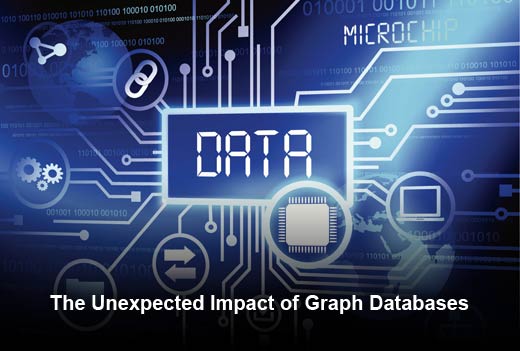You’ve probably used a product or service powered by a graph database within the last few hours. From social media sites like Twitter and Facebook to real-time recommendations on eBay, graphs impact our lives every day.
Whether you’re identifying a potential dating match or mapping the suspicious behaviors of a fraud ring, the uses and applications of graph databases are endless. Graphs are ideal for today’s next-generation applications because they efficiently store both data and its relationships – something other databases simply can’t do.
In this slideshow, Neo Technology provides a look at the range of unexpected ways graphs impact our everyday lives.
The Unexpected Impact of Graph Databases
Click through for real-world examples of how graph databases are influencing our lives everyday, as identified by Neo Technology.
Fraud Detection
Each year, banks and insurance companies lose billions of dollars to fraud. Fraud alone costs the insurance industry an estimated $80 billion annually in the U.S. and is on the rise. Traditional analysis techniques catch only a handful of fraud scenarios because sophisticated criminals often elude these methods through collaboration.
Using graph databases, investigators are able to perform link analysis to uncover a variety of behavioral patterns, which enables them to catch fraud rings and individual fraudsters in real time.
Online Dating
Today’s online dating scene owes its success to how graphs analyze even the most complex relationships between users, from shared friends and locations to personal passions and hobbies. By taking all of these factors into consideration, online dating sites better identify potential matches.
For example, SNAP Interactive found that relationships are more successful if they are forged between people who share common friends. SNAP uses a graph database to identify common friends and friends-of-friends of the 68 million users on its dating site Are You Interested, effectively leveraging 10 billion user connections.
Real-Time Recommendations
E-commerce giant Amazon has set the standard for real-time recommendations with its famous “You may also like…” feature. Following Amazon’s lead, a slew of enterprises have started offering real-time suggestions to online consumers. Recommendation engines powered by graph databases allow companies to offer personalized product, content and service suggestions.
One example is Walmart, which handles almost 250 million customers weekly through its 11,000 stores and its retail websites in 10 countries. By using a graph database to power its retail recommendation engine, Walmart connects complex buyer and product data to gain insight into customer needs and product trends – all in real time.
Graph-Based Search
Traditional relational databases and keyword-based searches simply can’t keep up with the crush of Big Data available to today’s enterprises. For giants like Google and Facebook, graph-based search tools provide an efficient way to surface volumes of related data for millions of users.
But graph-based search engines are also catching on with startups. CrunchBase profiles the millions of connections between 650,000 high-tech companies, executives and investors, and Decibel offers detailed data on over one million albums of music, including composers, musicians and record history.
Health Care
Modern medicine has harnessed the power of graph databases to revolutionize research and treatment into deadly diseases, ensuring patients receive the most effective drugs as early as possible. Companies like Zephyr Health, Curaspan Health Group, HealthUnlocked, GoodStart Genetics and Doximity use graph databases to leverage decades of health data and to deliver the most relevant information to researchers, caregivers, pharmaceutical companies, hospitals, and ultimately, patients.








